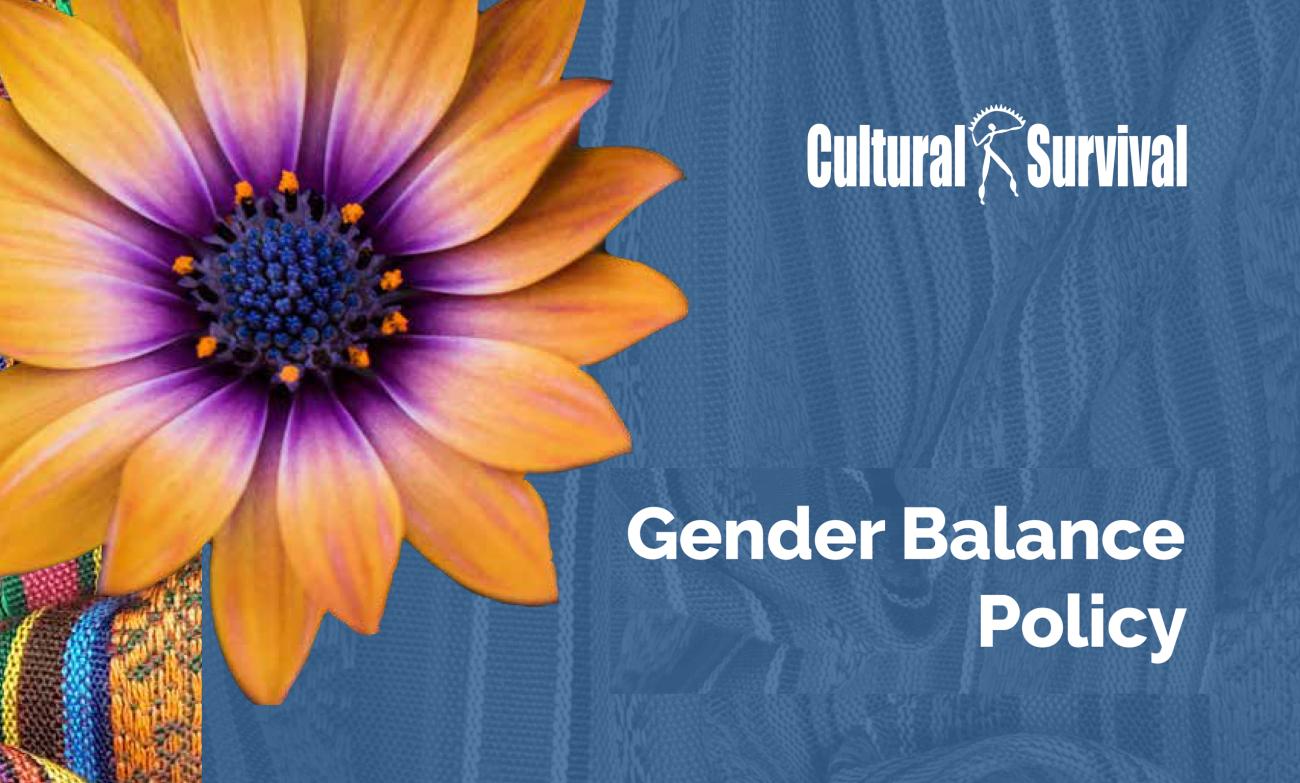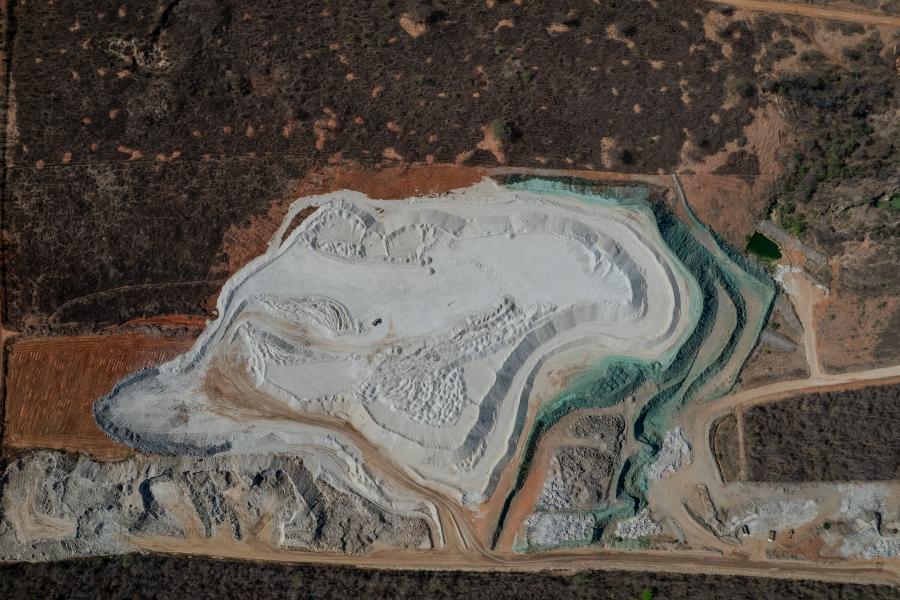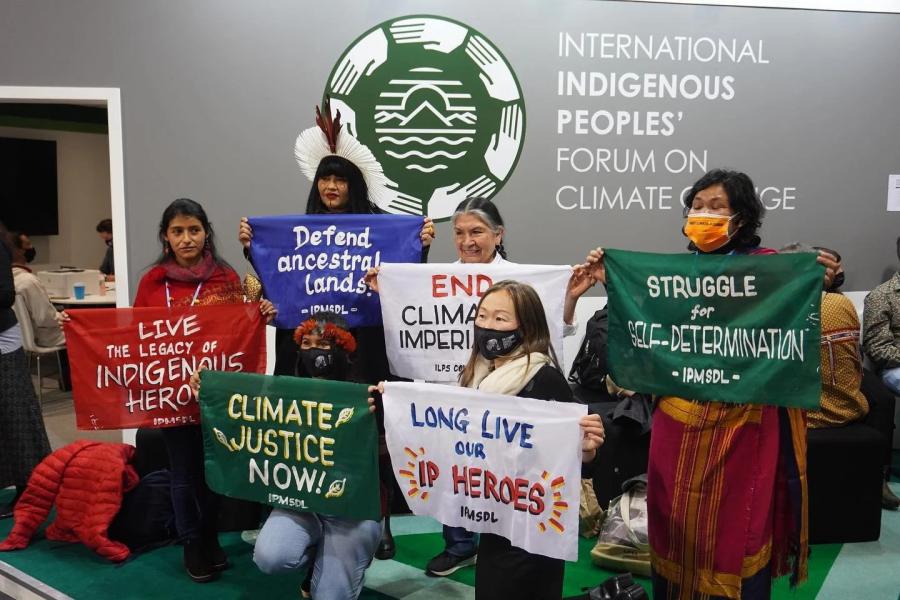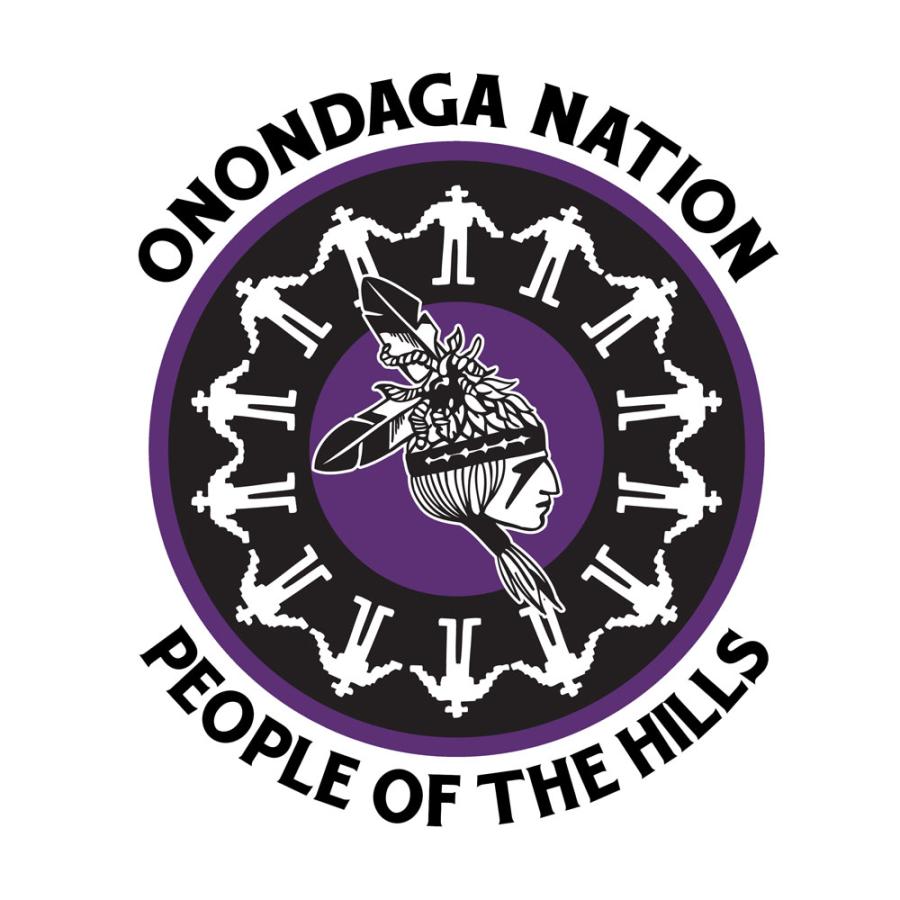
Cultural Survival is a global organization whose mission is to advocate for Indigenous Peoples' rights and support Indigenous communities’ self-determination, cultures, and political resilience. We support this mission through strategic approaches and programs. We are led by Indigenous people from various regions of the world.
Our growth in the last decade - in the number of staff, in geographic reach, and in the depth and impact of our relationships - is accompanied by a greater responsibility to collaborate with a diversity of Indigenous Peoples in various regions of the world, as well as to clearly articulate our values. Part of this responsibility is to recognize gender dynamics, inequities, and struggles from the perspectives of Indigenous Peoples and determine how best to contribute in ways that are sensitive to and supportive of community priorities.
This is why, as part of our strategic planning, Cultural Survival began a process of profound and intentional reflection on gender within the framework of an equity- and Indigenous sovereignty-oriented approach, to establish our organizational position and policy that will apply to staff and the partners with whom we collaborate. From the beginning, we expressed our intention that this policy be inclusive and comprehensive and that it address both the logistics of managing an organization and its projects as well as the cosmovisions of the varied roots that comprise our international organization, drawing on a plurality of voices and ways of thinking.
Director of Programs Avexnim Cojti Ren (Maya K'iche '), expresses with satisfaction and great hope, “I had never participated in the creation of an internal gender policy that fits the values of each one of the members of Cultural Survival: men, women, and non-binary people who reside in various parts of the world. We hope that in practice we can be an example of gender equality and shared leadership among team members.”
We sought a way to undertake this process in a decolonized, collective, and democratic way and without being tied to Western expectations in order to create a document guided by Indigenous worldviews and aligned with our mission to support the self-determination of Indigenous Peoples. Our intention was to create a document that would apply to our intercultural work and was not specific to certain cultures and identities, including the cultures with which our team members identify. However, we also wanted to avoid falling into inappropriate generalizations, since, although there are many common themes and values among Indigenous Peoples, each culture is different.
Gender can be a sensitive topic under colonial paradigms because understandings and social roles of gender are defined within families and within the social, cultural and religious contexts of Indigenous communities. We understand that colonization has twisted our collective worldview, and as a result, we live today in a world where gender relationships are out of balance. This imbalance has left women and other marginalized genders vulnerable to violence and discrimination. Likewise, having colleagues from different parts of the world with different understandings and identities brought to the table diverse points of view. We breathed. We had challenging dialogues. We listened to each other. We reflected. We challenged our own assumptions and broadened our understandings.
We sought consensus, working hard to ensure that each person felt that their ideas had been represented in complementarity with those of others. After several months of consultation, dialogue, and many rounds of revisions and check-ins to ensure ideas were faithfully represented and concerns adequately addressed, we completed the policy being presented today.
“It is important to note that, in order to coexist, we have to relearn nature, balance, and complementarity, so we can continue to live in balance in all spaces and ways of living, thus the importance of building mechanisms that help us make differences visible but at the same time make visible what unites us and complements us. Thus is born a gender policy from the need to heal our relationships and look towards a more just and dignified horizon, in the face of an increasingly decadent humanity,” says Sócrates Vásquez (Ayuujk), journalist and Community Media Program Manager.
It was moving that during the process several staff members commented that they were already learning about new perspectives and ways of understanding gender and seeing things from a new point of view, simply based on the policy drafts and perspectives shared by coworkers in meetings and surveys. The process itself has opened the door for many of us to deeply consider new perspectives and experiences of gender, showing the good faith commitment and participation of each participant.
Danielle DeLuca, Fundraising and Advocacy Manager, says, “Even if an organization states, in general, that it agrees with the idea of gender equality, not all of them put it into practice. The process of establishing this gender policy based on Indigenous worldviews has helped our team, who come from diverse experiences, speak honestly about gender and get ourselves on the same page. Now, with shared understandings, we can use this policy to guide us where we are going. ”
Our next step is implementation. Some of the steps are relatively simpler and can be implemented immediately, and there are even some that were already implemented when they were first raised during the process. Others, such as reviewing internal policies and programs, conducting trainings, and, for example, creating new processes such as one based on restorative justice regarding complaints, will take time. The document does not contain all of the solutions; it is a living document and will continue to be reviewed and revised. We recognize there may be omissions and will continue learning in order to do the best we can to support the people alongside whom we work. The policy will be regularly reviewed and updated as needed, as defined in the document itself. It prescribes actions we see as essential to putting into practice the values and priorities that we have collectively developed.
Below is a brief excerpt of the policy. Click here to view the full policy.
Indigenous Peoples’ views and understandings of gender are just as diverse as their cultures are. However, it bears highlighting that there is a fundamental difference between Indigenous Peoples’ approaches to issues of gender equity and that of western societies. While western societies glorify the individual, Indigenous Peoples prioritize the communal. We believe that within this communal living, Indigenous Peoples can best develop the tools needed to assert their rights and achieve gender equity.
We recognize that violence, including physical, psychological, and in the form of exclusion and marginalization, takes place against Indigenous Peoples in general, and in communities there is also violence against more vulnerable groups such as women, transgender people, non-binary people, intersex people, Two-Spirit people, and people of other genders; lesbian, gay, bisexual, asexual, and queer people and people with other sexual orientations; people with disabilities; elders; and children. We also recognize that there are differences among the genders and the roles that are practiced within communities as part of community structures and ways of life.



